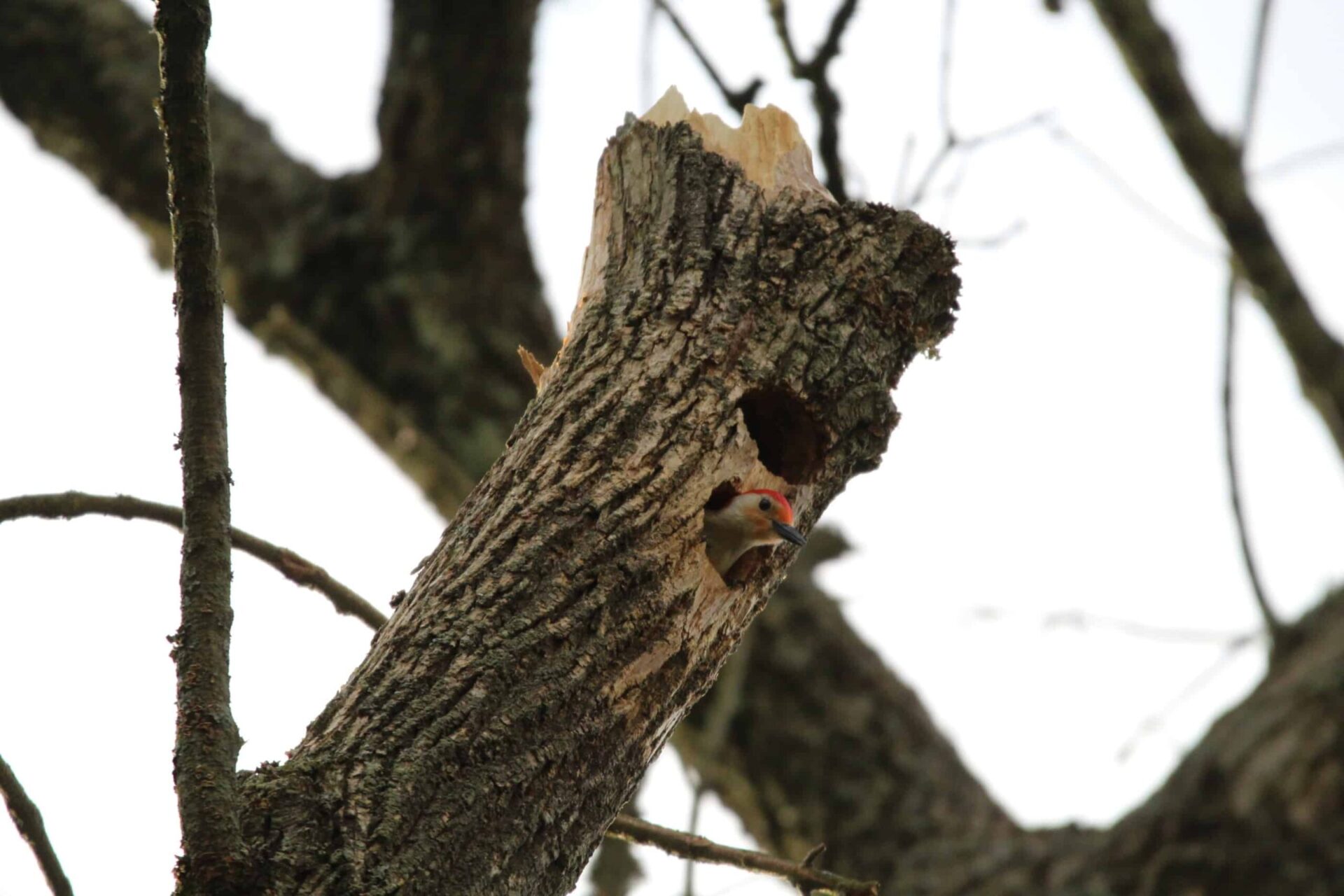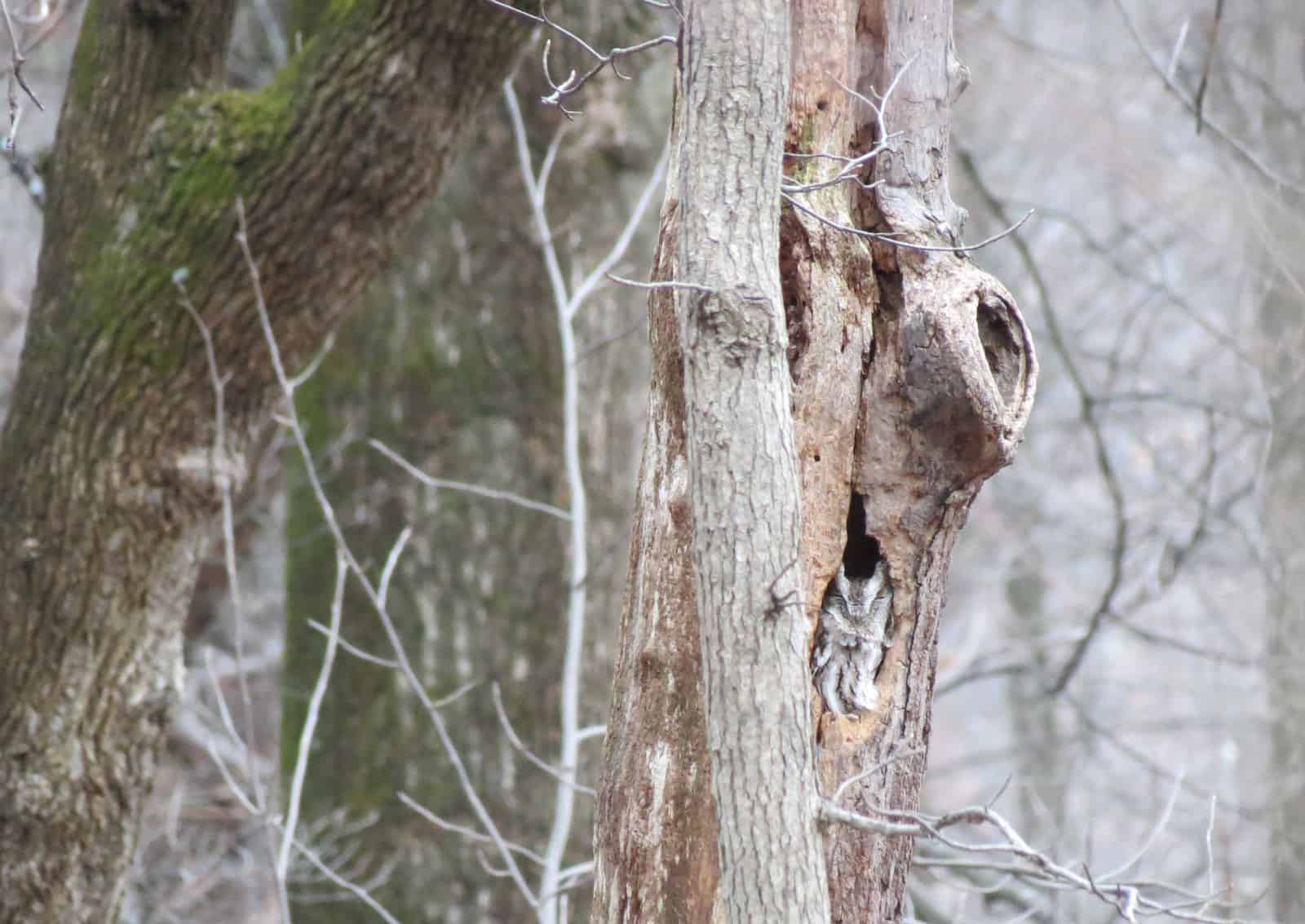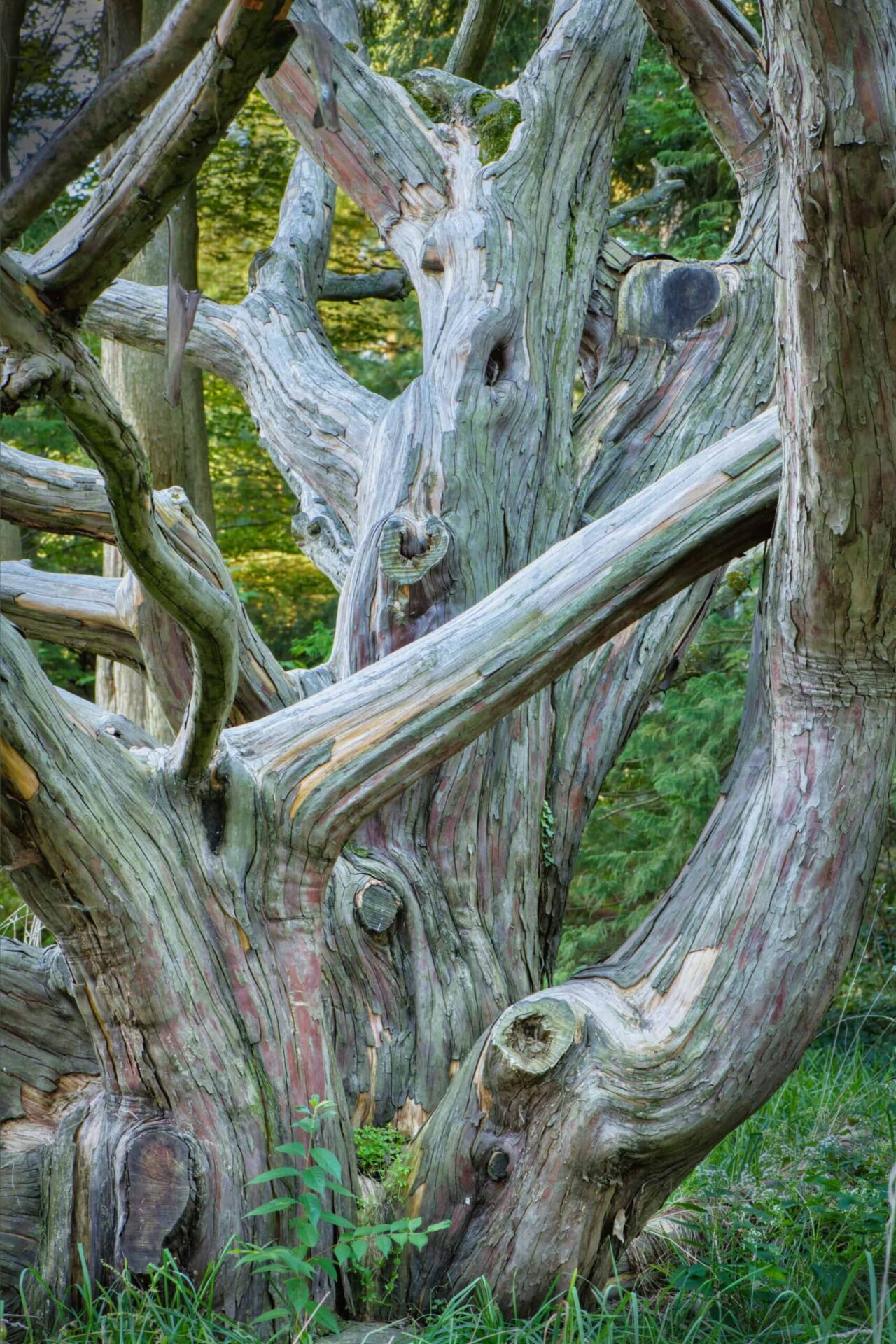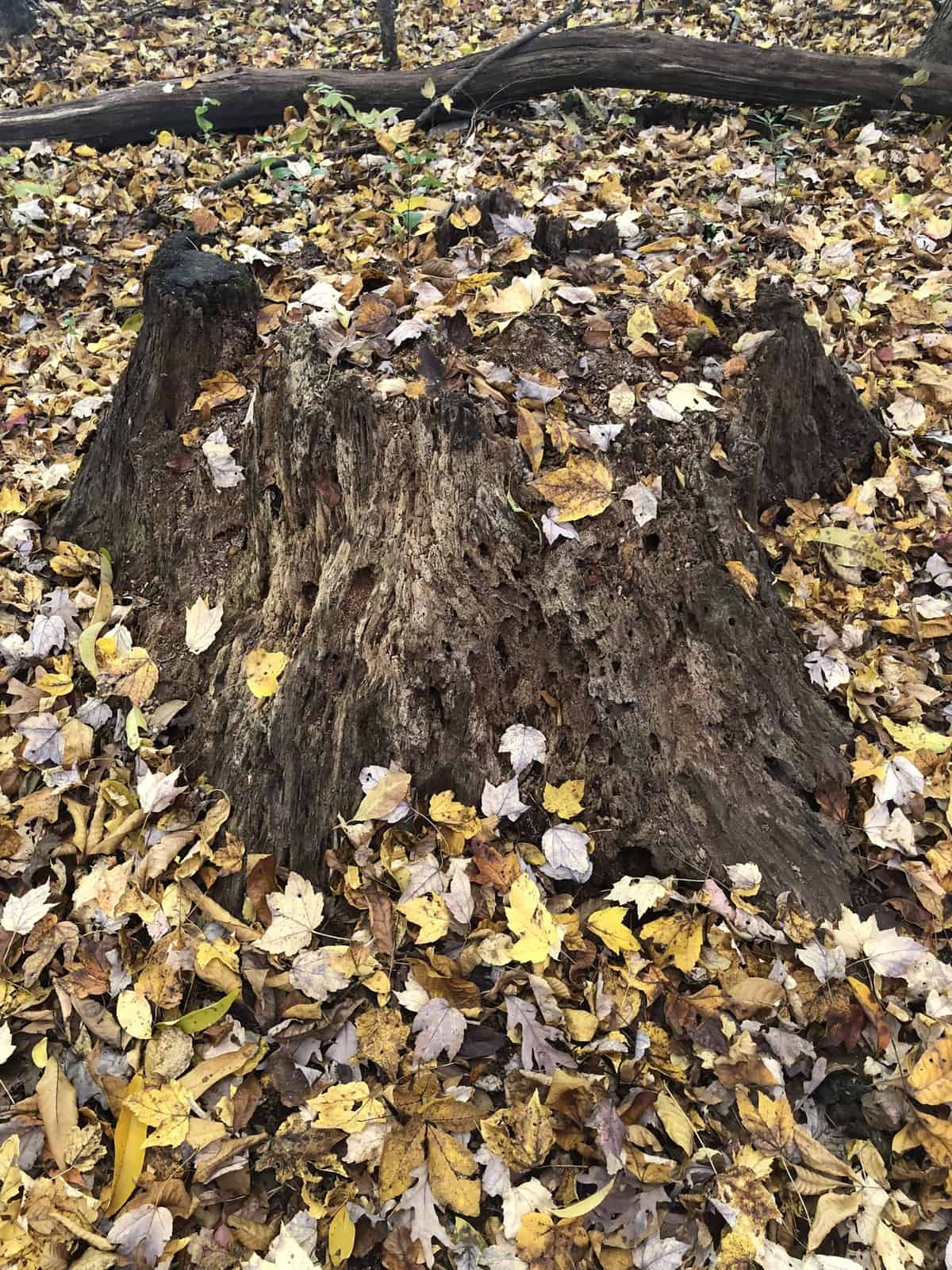The Abundant Life Of Dead (& Dying) Trees
February 27, 2023
A up-close view of fungi growing on a tree.
by Tianna Godsey.
Whether as a snag, log, or stump (and in some cases, only in memoriam), the life of a tree extends far beyond its death.
A copse becomes a network, a community created by trees and the mysterious ways they communicate beneath the earth in a web of veiny roots carrying chemical signals—an entire, silent language beneath our feet.
Each year as we welcome winter, there is a quiet enfolding of nature as trees shed their leaves. We discover beauty in a season when bare limbs stand in stark contrast to our faithful evergreens, whose year-round needles persist in our yards, and for those of us who share in the tradition, even inside our homes for a month or two.
While at other times of year the bare limbs of dead and dying trees often stick out like sore thumbs among a forest of flourishing leaves, their presence is less noticeable in winter—but no less full of purpose. Dead trees and downed wood play a vital role in ecosystems by:
- Aiding plant regeneration;
- Cycling nutrients;
- Decreasing erosion;
- Influencing drainage, soil moisture, and carbon storage; and
- Providing wildlife habitat.
Dead and dying trees have a place and purpose on Natural Lands’ protected open space. Wherever they are safe and feasible to maintain, our stewardship staff allow dead/dying trees to remain in the landscape as snags, logs, and stumps.
While woodpeckers will make use of living trees, they prefer to create nest cavities and store or “cache” their food in dead/dying trees, when the bark is easier to ‘drill’ through. These trees also become a home to owls, insects, and other small wildlife, which attracts larger predators. Decaying trees foster fungal growth and give life to new ecosystems throughout the stages of decomposition.
The life of a dead tree is abundant.
life continues after death
So, for how long can a dead/dying tree continue to produce life and be beneficial to the ecosystem? About 100 years, before fully decomposing.
Individual tree specimens have different life expectancies that are based on external factors such as disease, predation by animals, pests, human impact, and climate. Certain species are expected to live longer or shorter, but there is no guarantee.
A tree’s life cycle begins from germination of a seed all the way to its senescence as a snag/log/stump. From shoot to seedling to sapling, a tree must persist against the threats of disease and hungry natural predators like deer and other herb/omnivores.
While some may find the presence and appearance of a dead stump or log unsightly, we think there is beauty not only in their form but also their essential functions. Salamanders and other small amphibians carve out homes beneath logs, while all types of fungi grow and begin to work on decomposing the dead tree. Darkling beetles spend their entire lifecycle on the fungi of dead trees.
Ecosystems flourish in the presence of dead/dying natural matter. (If you see a fallen tree in the woods, look for insect trails on the insides of the bark. They resemble ancient symbols.)
purpose & beauty in the afterlife
“Property owners usually remove dead trees, thinking they will spread disease; while in fact, dead trees create a robust, healthy ecosystem,” says Sam Nestory, naturalist and engagement manager at Stoneleigh: a natural garden.
Sam led a tour of Stoneleigh’s snags and logs during a Spooky Silhouettes event in October 2022. Among the winding pathways through ancient oaks and gnarled dogwoods, there are trees which have passed on to the afterlife. In one clearing, you’ll find a white pine snag (a standing dead tree) that has been topped and “coroneted” to appear as though naturally split, encouraging wildlife to nest and use the dead tree as a home or a place to store food for winter.
Another of Stoneleigh’s beauties is an 80-year-old English yew that arches like an statue, appearing as if lightning has solidified in tree form.
Fun fact: There is a Victorian-era tradition of gardens called stumperies, where logs and stumps are interspersed with ferns and mosses. You can visit a public stumpery at Morris Arboretum in Philadelphia.
anatomy of a tree
The rings of a tree, known as ‘growth rings,’ will mark the life of a tree. They also act as indicators of climate, growing wider in warm, wet years and thinner when it is cold and dry.
Known as heartwood, the densest, heaviest part of the trunk’s wood is often the darkest color. The heartwood stores sugars, dyes, and oils while providing strength to a tree.
‘leaf’ it all behind
Speak to any naturalist in autumn, and they’ll encourage you to “leave the leaves.” But what’s the science behind this?
Just as dead trees foster myriad microscopic life, fallen leaves are a home for many insects and small mammals who overwinter beneath the dried leaves.
Sign up for the Natural Lands e-newsletter to be the first to hear about upcoming events and learn about ecosystems, open space, and conservation.
next post
Heartwood.
February 27, 2023
At Stoneleigh: a natural garden, a magnificent London planetree towers near the Main House like a living picture frame. Although we don’t have any specific […]
continue reading



